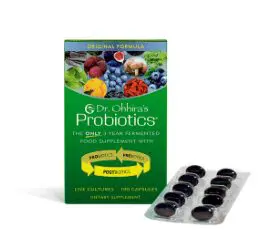Oct 11, 2012
Alan Richman

Sports nutrition supplements are addressing new interest areas, including recovery, cognitive health, and immune health.
Sports nutrition—while certainly one of the most popular segments of the dietary supplements industry—is also often among the most controversial. Take the recent dispute over DMAA, for instance.
Right now, DMAA—methylhexaneamine—is the target of several lawsuits, following assertions that it may have been connected to the deaths of two U.S. soldiers who collapsed during routine physical training. The product, classified as a food additive by FDA, is said to act as a stimulant for extra energy during a workout or other physical activity. Because of safety concerns and adverse events associated with DMAA’s use, the ingredient has been banned by many governments and sports organizations, including the World Anti-Doping Agency.
DMAA also is controversial because there is conflicting research as to how it is sourced, explains Ed Wyszumiala, general manager of the NSF Dietary Supplement Certification Program, part of NSF International, one of the largest testing and certifying organizations in the world. While at least one report considers DMAA a geranium extract, and some companies have labeled DMAA products as derived from natural geranium, the Ann Arbor, MI-based NSF says others have found no direct association between geraniums and DMAA.
“The bottom line is that DMAA was approved as a pharmaceutical active ingredient in the 1940s, not as a supplement. Therefore, in the United States, it would not be allowed for use in a supplement,” says Wyszumiala.
He adds, “When the ingredient was first brought to market by Eli Lilly in the 1940s as a pharmaceutical nasal decongestant, it was classified as being a stimulant that was not quite as potent as amphetamine but more potent than ephedrine. Note that these ingredients are also not sold or marketed as dietary supplements.”
DMAA’s culpability or innocence will be determined over time. But one thing that will not change is the willingness of fitness supplement buyers—serious bodybuilders, endurance athletes, professional sports stars, and weekend warriors—to plunk down big bucks in pursuit of nutrition to improve performance.
Performance, however, entails many angles, and sports nutrition research is now looking past performance alone and at other areas of health implicated in athletics. Some of these include helping an athlete recover more quickly from a grueling, body-fatiguing workout; shoring up cognitive health, because sports performance often depends on mental focus and agility; and fortifying immune health to maintain top form. Even probiotics, usually associated with digestive health, have been coming on as a useful adjunct for sports enthusiasts.
Sports Nutrition and Sports Recovery
Veering from the general wisdom, Lauren Schmitt, a registered dietitian, nutritionist, and certified personal trainer, says people place too much emphasis on protein for recovery, when what they really need is a mix of carbs and protein after working out.
Schmitt’s company, Healthy Eating and Training Inc. (Studio City, CA), has developed nutrition programs for major corporations, including Sony Pictures Entertainment and Dreamworks Animation. She says people lean toward protein because they hear so much about it in the gym and in the media.
She acknowledges that there is some truth in the belief that protein fuels and builds muscles. “But,” she insists, “that is not the whole picture. Carbohydrates are stored as glycogen in the muscle. Glycogen actually powers the muscles for endurance exercise. Protein will help repair and build the muscle, but carbohydrates are the energy source.” Following a workout, it is smart to consume whole-grain carbs such as brown rice, quinoa, and whole-wheat bread, and even carbs from fruit, Schmitt says.
No one should be worried about these carbohydrates turning to fat, she explains. “The calories we consume directly after a workout are burned off quite quickly as long as they are not consumed in excess.” In fact, she says, some food should be taken within 30–60 minutes after a workout and then again two hours later, when the body will need additional energy. Eating smaller meals more often also helps boost metabolic rates, says Schmitt.
So when does a supplement like a recovery shake make sense? She says it should be taken as soon as possible after the workout because there is a key window of opportunity immediately post-workout in which muscle tissue efficiently utilizes amino acids to repair the structural and contractile units of skeletal muscle.
Michael Crabtree, director of sales for the ribose ingredient division of Bioenergy Life Science, also recommends a post-workout feeding that is rich in protein and carbohydrates, while being correspondingly low in dietary fat.
The Minneapolis, MN–based executive says: “After a workout, tissue needs macro and micro nutrition as quickly as possible to ensure continuity and to maximize recovery benefit.” However, he adds, “But eating a whole-food meal immediately following exercise is not ideal for several reasons, beginning with the low activity of the digestive system during exercise. If the digestive system is non-functional, then the food particle constituents will not be made available to the tissue that needs it most within a sufficient time frame.” He says this is what makes powdered, fluid-soluble products so valuable, because liquid solubility expedites the delivery of nutrients to their target location.
Bioenergy’s patented, GRAS-affirmed Bioenergy Ribose ingredient is touted for both sports energy and recovery. Crabtree describes the ingredient as a 5-carbon sugar that, unlike other sugars, is not burned for fuel, but is absorbed into cells to aid the regeneration of nucleotides, the fundamental building block of ATP (adenosine triphosphate).
Crabtree adds, “When oxygen is compromised, either due to exercise, certain diseases, or natural aging, ribose works synergistically with many other compounds but only ribose elevates the levels of ATP in the cell.”
Emphasizing that ribose is the “limiting factor” when the body produces ATP, Crabtree says the physiologically functional form of ribose, called 5-phosphoribosyl-1-pyrophosphate (PRPP), regulates the mechanism that regenerates nucleotides in all animal systems. When the concentration of PRPP is insufficient, he continues, taking supplemental ribose may help ensure that an adequate amount is always available for energy production, cellular repair, and recovery.
Taking a somewhat different pathway, Next Pharmaceuticals (Salinas, CA) markets an ingredient called Nexrutine for keeping joints healthy after overambitious workouts. Vice president Deanne Dolnick says, “It alleviates the aches and pains associated with physical activity, exercise, and overexertion, and helps promote recovery from intense workouts.”
According to Dolnick, Nexrutine works by inhibiting the gene expression of the inflammation-associated COX-2 enzyme. She adds, “What makes Nexrutine different is that because of the way it works, it does not promote the negative side effects associated with COX-2 inhibition.” These side effects are most commonly identified as insomnia, abdominal pain, flatulence, headache, nausea, and diarrhea.
Allendale, NJ–based Lonza’s principal product for exercise recovery is Carnipure L-carnitine, which also plays a fundamental role in fat metabolism and energy production. As the company describes it, Carnipure tartrate is a salt of 68% L-carnitine and 32% L-tartaric acid, which is the highest L-carnitine concentration of any currently commercially available non-hygroscopic salt form.
Kevin Owen, PhD, the company’s NAFTA head of technical marketing and scientific affairs, says, “The first complaint usually noted by individuals who start to exercise or get back into a gym routine is muscle soreness. Typically, after 48 hours muscle aches begin to develop, which usually causes the individual to stop working out.” Therefore, he says, Carnipure was designed to provide a technology that would aid in reducing muscle soreness and improve recovery from these activities.
According to Owen, Carnipure focuses on a unique platform—the potential to enhance storage of L-carnitine in the endothelium of the smooth muscle within the capillary sphincter beds of blood vessels. He says research has shown that a high concentration of L-carnitine in these sphincters leads to a dilation effect. Dilation allows for increased blood flow and subsequently greater oxygenation of muscle tissues—all great for sports performance.
Jeff S. Volek, PhD, RD, is a University of Connecticut researcher who has conducted Carnipure research for Lonza. He says his findings show that although more than 95% of the total L-carnitine pool resides in skeletal muscle, detailed new evidence shows that L-carnitine also plays a more wide-ranging role in human health and exercise. Specifically, he says, supplementation promotes vascular health, increases androgen receptors, acts as an antioxidant, and decreases exercise-induced muscle damage and soreness to promote better recovery from exercise.
In Ames, IA, Shawn Baier, COO of Metabolic Technologies Inc., identifies HMß (beta-hydroxy beta-methylbutyrate) as a metabolite of the branched chain amino acid leucine. According to Baier, HMß helps increase strength and muscle mass, improve aerobic performance, and reduce recovery time. It does this by two mechanisms: increasing protein synthesis and decreasing protein breakdown, he says. Although leucine also has shown these positive effects, Baier says HMß is a more powerful stimulator in promoting muscle gain.
Baier also says that HMß increases protein synthesis by stimulating the mTOR pathway. HMß also decreases protein breakdown caused by intense training by blocking key activators of the ubiquitin-proteosome proteolytic pathway, a proteolytic enzyme that also breaks down muscle.
Baier recommends that active individuals take HMß before high-intensity training to help prevent increases in creatine phosphokinase (CPK) and lactate dehydrogenase (LDH). Both of these are indicators of muscle damage. “By reducing muscle damage, the individual can train at a higher intensity more often, producing greater results,” he explains.
Rehydration is the key recovery benefit of Sustamine, Kyowa Hakko USA’s (New York City) dipeptide that combines L-alanine and L-glutamine. Marketing director Karen Todd, RD, CSCS, HFS, says, “Sustamine helps athletes of all types recover during and after each workout by rehydrating the body, replenishing the muscles for faster recovery.”
The ingredient, which may be delivered in tablet or capsule form, is highly soluble, so it is also stable for use in liquids such as water, sports drinks, and the like. Meanwhile, its GRAS status allows for delivery in gels and other food forms. Todd enumerates Sustamine’s attributes. It is quickly and easily absorbed by the body, which means muscles get the amino acids they need faster. It enhances electrolyte and water absorption in the intestines. It stimulates glycogen synthesis, inhibits muscle protein breakdown, and promotes the synthesis of muscle protein. And, finally, it also has been shown to help protect the integrity of the gastrointestinal tract, contributing to better nutrient absorption.
Sports Nutrition and Brain Health/Cognitive Functioning
Cognizin citicoline, another Kyowa Hakko ingredient, is promoted for helping athletes and sports enthusiasts focus by increasing ATP in the brain for brain energy. Todd says, “Our most recent study showed improved focus and attention, which is important during competition and exertion.”
The product’s GRAS status means it can be used in the United States at levels of 250 mg/serving in various food products, including: beverages and beverage bases; breakfast cereals; chewing gum; dairy product analogs; frozen dairy desserts; grain products and pastas; hard candies; milk and milk products; processed fruits and fruit juices; and soft candy. And, Todd adds, it can be delivered in tablet and capsule forms as well.
In White Bear Lake, MN, Chemi Nutra’s Chase Hagerman, business development and marketing manager, says, “We have a small portfolio of ingredients that primarily fit in the sports and cognitive health areas.”
The two most prominent items in this portfolio are AlphaSize alpha-glycerylphosphorylcholine (A-GPC), a nutrient that has been shown to significantly increase levels of the key brain neurotransmitter acetylcholine; and SerinAid phosphatidylserine (PS), a phospholipid that plays a critical role in maintaining mental performance.
According to Hagerman, when A-GPC is taken orally, it is converted to a metabolically active form of choline called phosphorylcholine. This then migrates to the synaptic nerve endings found throughout the entire central nervous system, and in turn increases the synthesis and release of acetylcholine. Acetylcholine is a vastly important neurotransmitter that is vitally involved, among other things, in muscle contraction. Hence the value in physical capacity.
Of SerinAid PS, Hagerman adds, “After administration, SerinAid PS assists proteins that manage membrane functions, assists the entry of nutrients into cells and the exit of harmful, stress-related waste products out of cells, and is involved in transmission of molecular messages from cell to cell.” In other words, SerinAid PS helps preserve cognitive health—something every athlete can appreciate.
Another benefit he mentions is PS’s ability to reduce cortisol levels that rise when a person is subjected to physical and emotional stress. “We recently filed a patent looking at short-term supplementation with PS helping maintain testosterone levels,” he adds.
Hagerman says both PS and A-GPC can be added to bulk powder drink mixes, shots, bars, and so on. He cites a Chemi Nutra customer called IQ PLUS Foods, which makes a PS nutrition bar that is specifically targeted to golfers. He notes, “A study showed that drive accuracy greatly increased while using the bar.”
Sports Nutrition: Maintaining a Healthy Immune System
According to Richard Mueller, CEO of Biothera, and president of the Biothera Healthcare Group, both located in Eagan, MN, clinical research demonstrates the importance of immune support for sports performance.
“High-intensity workouts can temporarily weaken the body’s defenses and may derail training programs and performance gains,” he says. This is why, he notes, it is common for runners to develop upper respiratory tract infections in the days and weeks following completion of a marathon.
Mueller says his company’s Wellmune WGP beta-glucan ingredient may help provide a solution. He cites multiple clinical studies in which the food, beverage, and supplement ingredient reduced the incidence of upper respiratory tract infections that commonly afflict distance runners and other athletes. In one double-blinded study, 182 participants in the 2011 Livestrong marathon in Austin, TX, used Wellmune for four weeks and experienced a 40% reduction in upper respiratory symptoms.
Mueller explains the mechanism of action. “Immune cells in the gastrointestinal tract take up Wellmune WGP and transport it to immune organs throughout the body. In those organs, immune cells called macrophages digest Wellmune WGP into smaller fragments and slowly release them over a number of days. The fragments bind to neutrophils, via complement receptor 3 (CR3), which are the most abundant immune cells in the body. In fact, neutrophils account for 60-70% of all immune cells and are the body’s first line of defense against outside challenges.” Neutrophils with Wellmune WGP attached are said to more quickly navigate to the signal emitted by foreign cells and help to eliminate those cells from the body.
Most important, says Mueller, Wellmune WGP enhances immune function without stimulating the immune system. “Immune boosters or stimulators may be harmful, whereas Wellmune has been demonstrated safe for everyday consumption,” he says.
Kyowa Hakko also draws the connection between immune enhancers and fitness applications. The company’s Setria is a proprietary tripeptide consisting of three amino acids: glutamate, cysteine, and glycine, the building blocks of glutathione. Todd says glutathione is recognized as the “master antioxidant.” Without it, each cell would become so ravaged by free radicals that it would disintegrate. A lack of glutathione would also negatively affect the liver and immune system. Therefore, Todd suggests, Setria may be able to enhance athletic performance by fighting free radicals and removing other toxins that could be diminishing overall health and heartiness.
Sports Nutrition: New Role for Probiotics?
Possibly the most unique emerging concept in sports nutrition revolves around the notion that probiotics may be able to enhance athletic performance. New data presented in April at the International Probiotics Association’s World Congress held in California point in this direction.
Two studies using the Japanese supplement Dr. Ohhira’s Probiotics showed that when participants took a daily dose of three capsules on an empty stomach for three weeks, they experienced significant support for two major measures of athletic performance: VO2 max and anaerobic threshold. VO2 max refers to the body’s ability to transport and utilize oxygen during exercise. Anaerobic threshold refers to the highest steady-state exercise intensity that an athlete can sustain for extended periods; beyond this threshold, lactate is produced faster than it can be removed.
Natalie Engelbart, DC, a science adviser who works with Essential Formulas Inc., the U.S. distributor of the Dr. Ohhira’s line, says the most obvious answer as to how probiotics can bring about these results is that they simply help athletes absorb key nutrients more effectively on a daily basis.
Engelbart adds, “The probiotic formula used in these studies is, admittedly, a bit unusual. It is not a typical freeze-dried probiotic. It’s actually a Japanese natural vegetable blend, fermented by 12 probiotic strains. The end result is a substance that contains probiotic support along with a lot of the natural byproducts of fermentation. These include vitamins, 20 amino acids, and minerals such as iron, phosphorus, potassium, and sodium.”
According to Engelbart, “These components are especially important in producing red blood cells, and red blood cells are the oxygen carriers.” She says this explains the effects on VO2 max subjects saw when taking the supplement. Study subjects experienced an 8.4% increase in hemoglobin levels and saw VO2 increases of 30%. The effect on blood production might also explain why the study found some support for efficient removal of lactic acid out of the bloodstream.
Sports Supplements: the Bottom Line
Will taking any product from these four emerging sports nutrition subcategories transform a wannabe into a champion? Of course not. But it would be foolish to discount their appeal to competitive fitness enthusiasts who always are looking for the next great thing.
Article Source: http://bit.ly/2jb0Mw2






